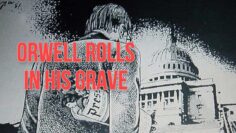War Made Easy: How Presidents & Pundits Keep Spinning Us to Death
War Made Easy critically analyses the United States government’s use of propaganda to promote military interventions. Based on Norman Solomon’s book of the same name, it chronicles how administrations, both Democratic and Republican, have employed similar tactics to garner public support for wars over the past five decades.
The film draws striking parallels between various conflicts, particularly the Vietnam War and the Iraq War, highlighting the recurring patterns in official rhetoric and media coverage. It showcases archival footage of presidents from Lyndon B. Johnson to George W. Bush, demonstrating how they consistently framed military actions as reluctant but necessary steps towards peace and democracy.
A key focus of the documentary is the role of the media in disseminating government propaganda. It illustrates how journalists often become complicit in promoting war efforts, especially in the early stages of conflicts. It uses examples such as Walter Cronkite’s initial enthusiasm for the Vietnam War to demonstrate how even respected media figures can contribute to the normalization of military interventions.
The documentary also addresses the public’s perception of modern warfare, highlighting how the emphasis on “precision” weapons and high-tech military equipment has led to a disconnection from the human cost of conflicts. It contrasts the sanitized portrayal of war in media coverage with the reality of civilian casualties, which have increased dramatically in modern conflicts.
Through its analysis, the film raises important questions about the nature of American foreign policy, the function of a free press in a democracy, and the ethical responsibilities of journalists during times of war. It serves as a thought-provoking examination of how language, media, and public relations strategies are used to shape public opinion and maintain support for military actions.










